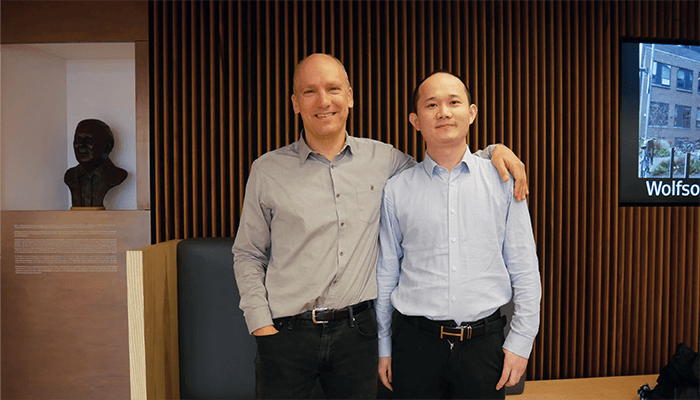Inspired by natural biological encapsulants, researchers from the University of Cambridge, UK, have created what could be described as “super-sized nanocages,” which can help deliver drug cargoes (1). Using chemical self-assembly to create complex structures with targeted functions from simple building blocks, the research mimics the way viruses build increasingly larger capsids with icosahedral symmetry and quasi-equivalence principles. With more research, these findings could feed into a new wave of drug development. We spoke to Jonathan Nitschke at the University of Cambridge (and recipient of the Izatt-Christensen Award in Supramolecular chemistry in 2022), and first author, Kai Wu, a postdoctoral researcher in the Nitschke lab in the Yusuf Hamied Department of Chemistry, to learn more.

Give us an overview of your research…
Our work deals with the preparation of complex structures using a process we refer to as subcomponent self-assembly, where both covalent (generally C=N) and coordinative (N→metal) bonds are formed during the same overall self-assembly process.
By studying new metal-organic architectures, specifically those that possess intricate structures, we aim to establish design principles that can be used for various application-driven research areas, including phase transfer, host–guest chemistry, and materials science projects.
For many years, we have attempted to create fivefold linking subcomponents based on different backbones for the construction of large capsules using subcomponent self-assembly. These attempts were unsuccessful, either due to the difficulties in subcomponent synthesis or the formation of entropically favored smaller assemblies (for example, sandwich structures). However, with perseverance and additional expertise, we were finally able to tackle this very challenging issue.
Please share some details of your recent success…
Our paper, published in Nature Synthesis, describes the development of a novel synthetic strategy for the assembly of progressively larger nanocages using a single pentagonal pyrrole-based subcomponent. The inspiration behind this project came from the natural systems of biological encapsulants, such as viral capsids and ferritin protein cages, which use many identical subunits to tile the surface of a polyhedron. We then sought to understand the construction principles for larger and more functional capsules capable of binding and carrying large biomolecules as cargoes.
After constructing nanocages of increasing size derived from our pyrrole-based subcomponent, we identified the key dihedral angle between the pentagonal faces of the cage. Our results showed that reasoned shifts in the preferred coordination number of the metal ions employed, along with the denticity and steric hindrance of the ligands enabled the generation of progressively larger cages. Ultimately, this provides insight into rational control over the self-assembly of discrete, nanometre-scale, hollow coordination cages composed of simple components.
How could this research support drug discovery and development?
Our research could support the future of drug discovery and development by providing a new method for the synthesis of large, self-assembling nanocages that could be used to encapsulate and deliver drugs to specific targets in the body. These nanocages could provide a way to protect and transport biomolecules, including therapeutic agents, to target tissues or cells, enhancing their efficacy while minimizing unwanted side effects. Moreover, the phenomenon of solvent-determined supramolecular transition, which dynamically changes the size of the molecular cage cavity through solvent modulation, holds promise for dynamic encapsulation and release of drug molecules. This work, sponsored in part by Astex Pharmaceuticals under its Sustaining Innovation Postdoctoral Programme, aims to have real-world impact in the field of new drug development.
References
- K Wu, J Nitschke et. al., “Systematic construction of progressively larger capsules from a fivefold linking pyrrole-based subcomponent,” Nature Synthesis (2023). DOI: 10.1038/s44160-023-00276-9. www.nature.com/articles/s44160-023-00276-9




